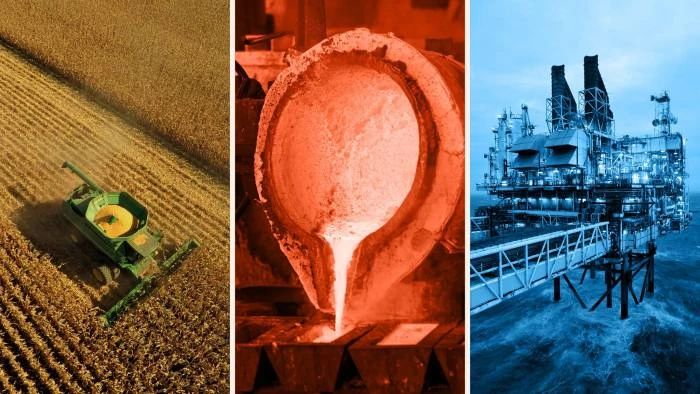
From corn to crude and copper, commodities have enjoyed a stellar start to 2021 as investors scour the market for inflation hedges and bets on the “greening” of the global economy.
A fierce rally in copper has sent it above $9,000 a tonne for the first time since 2011. After a dramatic recovery, Brent crude on Tuesday briefly crossed $66 a barrel, the level at which it started a tumultuous 2020. And corn is up about 17 per cent since the start of 2021 to an almost eight-year high of $5.54 a bushel.
The S&P GSCI spot index, which tracks price movements for 24 raw materials, is up 17 per cent this year.
Predictions of a so-called supercycle — a prolonged period of high prices as demand outstrips supply — have lured investors to commodities, according to sector specialists. Others are seeking to buy real assets as protection against inflation.
“The latest commodity price gains are being driven by money inflows and inflationary expectations, rather than actual physical buyers,” said Alastair Munro of Marex Spectron, a brokerage.
Inflation is becoming more of a concern among investors, as a result of the unprecedented monetary and fiscal policies enacted during the crisis. A weakening dollar is also making commodities cheaper in other currencies, fanning demand.
“There are many signs that economic recovery, combined with massive monetary and fiscal stimulus, could lead to inflation as newly created money finds its way into the real economy rather than just financial assets,” said Ian Lance, co-manager of Temple Bar Investment Trust.
But some analysts fear that the inflation trade could become self-fulfilling.
“People are worried about inflation so they buy commodities then the prices go up even more,” Hansen said. “But that only lasts until the music stops.”
Speculative positions in agricultural futures contacts are just below the record high touched in early January, according to Dave Whitcomb of commodity specialist Peak Trading Research.
In China, the net speculative long position in copper on the Shanghai Futures Exchange — the difference between bets on rising and falling prices — has jumped sharply since the end of the lunar new year holiday.
“While calls of a metals supercycle are growing louder, the evidence suggests we’re in the midst of a cyclical overshoot,” said Bart Melek, head of commodity strategy at TD Securities.
Goldman Sachs and other big investment banks believe copper is heading for its biggest supply deficit in a decade as production fails to keep pace with demand in China and the rest of the world — especially as government spending on green infrastructure rises.
However, some analysts are concerned that policymakers in China will move to tighten credit conditions to rein in asset bubbles. That could sap its demand for industrial inputs.
“We expect most metals to start trending lower over the coming months as China speeds up monetary policy normalisation,” said Colin Hamilton of BMO Capital Markets.
The oil rally in recent months has been stoked by a recovery in transport demand as countries loosen virus-related curbs. But there has also been strong support provided by oil producers, which have cut output substantially to offset the hit to consumption.
Morgan Stanley said this week that it estimated the oil market was now in a deep deficit, with demand outstripping supply by as much as 2.8m barrels a day this year. “The stars have aligned for the oil market even faster than expected,” said Martijn Rats at Morgan Stanley.
While oil demand is still at least 5m b/d lower than in 2019, primarily due to economic fallout from the pandemic, it is expected to rebound once Covid-19 vaccinations are rolled out.
The Opec producer group could respond by raising production, but oil companies globally have been slashing investments in new supply. Some Wall Street banks argue that demand will continue to outstrip supply growth in the coming years, potentially creating one last price surge before electric vehicles cause consumption to peak.
Bank of America analysts said on Tuesday that under-investment in supply could send oil as high as $100 a barrel in the next five years. But such a surge would probably be shortlived, they said, forecasting Brent is more likely to average $50 to $70 a barrel between now and 2026.




















